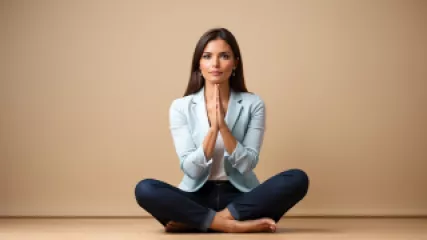Decoding My Personal Journey with Body Language: Unlocking the Power of Nonverbal Cues
Decoding My Personal Journey with Body Language: Unlocking the Power of Nonverbal Cues
Embracing the Language of the Body: My Path to Understanding Nonverbal Communication
As I reflect on my life, I realize that one of the most profound and transformative journeys I've embarked on has been the exploration of body language. It's a language that we all speak, yet often struggle to fully comprehend. For me, delving into the intricacies of nonverbal communication has been a revelation, a journey that has not only expanded my understanding of the world around me but has also profoundly impacted the way I navigate my personal and professional relationships.
Growing up, I was always fascinated by the nuances of human interaction. I would observe the subtle shifts in people's posture, the gentle flutter of their hands, and the way their eyes would dart around a room. Yet, I often found myself at a loss, unable to fully decode the meaning behind these seemingly innocuous gestures. It wasn't until later in life that I began to truly appreciate the power of body language and the crucial role it plays in our everyday lives.
Uncovering the Hidden Language of the Body
My journey towards understanding body language began somewhat serendipitously. It was during a chance encounter with a renowned body language expert that my eyes were opened to the incredible insights that could be gleaned from observing the human form. In a captivating conversation, this individual shared their deep knowledge of the subject, explaining how every subtle shift in posture, every flutter of the eyes, and every fidget of the fingers could reveal a wealth of information about a person's thoughts, emotions, and inner workings.
Intrigued, I dove headfirst into the world of nonverbal communication, immersing myself in books, articles, and online resources. I quickly realized that body language was not just a passive observation but a dynamic, multifaceted language that could be actively learned and mastered. From the subconscious signals we send with our bodies to the intentional cues we use to convey our messages, I was captivated by the sheer complexity and nuance of this form of communication.
Applying Body Language Strategies in My Personal Life
As I delved deeper into the study of body language, I began to see its profound impact on my personal relationships and interactions. I became acutely aware of the way I carried myself, the subtle movements I made, and the message they conveyed to those around me. I noticed that by consciously adjusting my posture, maintaining eye contact, and using open, welcoming gestures, I was able to establish a deeper sense of connection with the people I interacted with.
One of the most significant breakthroughs came when I began to apply body language strategies in my romantic relationships. I recognized that by being more attuned to my partner's nonverbal cues, I could better understand their emotions, needs, and desires. Simple gestures like leaning in, mirroring their movements, and using touch to convey affection fostered a level of intimacy and understanding that had previously eluded me.
Moreover, I found that by being mindful of my own body language, I could project confidence, trustworthiness, and approachability – traits that proved invaluable in both my personal and professional life. Whether I was attending a networking event, delivering a presentation, or engaging in a difficult conversation, I made a conscious effort to align my body language with the message I wanted to convey, ultimately enhancing my ability to communicate effectively and build meaningful connections.
Becoming a Body Language Enthusiast and Educator
As my fascination with body language deepened, I found myself becoming a veritable enthusiast of the subject. I eagerly shared my newfound knowledge with friends, family, and colleagues, captivating them with insights into the hidden language of the body. I relished the opportunity to observe people's reactions and to see the "aha" moments when they started to recognize the power of nonverbal communication.
Inspired by the transformative impact that understanding body language had on my own life, I decided to take my passion a step further. I began to seek out opportunities to educate others on the subject, delivering workshops and seminars on the practical applications of body language in various contexts. From corporate training sessions to personal development workshops, I found immense fulfillment in helping individuals unlock the secrets of nonverbal communication and empowering them to use it to their advantage.
Throughout my journey, I've encountered a diverse array of individuals, each with their unique experiences and perspectives on body language. I've listened to their stories, learned from their insights, and been humbled by the profound impact that this profound form of communication can have on our lives. Whether it's helping a shy individual overcome their insecurities, guiding a business leader to project a more confident and approachable presence, or supporting a couple in strengthening their emotional connection, the power of body language has never ceased to amaze me.
The Transformative Power of Body Language: Lessons Learned and Insights Gained
As I reflect on my personal journey with body language, I'm struck by the profound lessons I've learned and the insights I've gained along the way. Here are some of the key takeaways that have had the most significant impact on my life:
1. Understanding Nonverbal Cues Enhances Emotional Intelligence
One of the most valuable lessons I've learned is that by becoming more attuned to body language, I've cultivated a deeper understanding of the emotions and inner states of the people around me. I've discovered that by observing subtle shifts in posture, facial expressions, and gestures, I can often gain a more nuanced and insightful understanding of how someone is feeling, even if they're not expressing it verbally. This heightened emotional intelligence has allowed me to navigate relationships with greater empathy, compassion, and sensitivity, ultimately strengthening the bonds I share with others.
2. Body Language Shapes First Impressions and Perceptions
Another crucial insight I've gained is the profound impact that body language has on the perceptions and first impressions we form of others. I've learned that the way we carry ourselves, the gestures we use, and the overall nonverbal cues we project can significantly influence how we are perceived by others. By being mindful of my own body language and actively shaping the impression I want to convey, I've been able to enhance my personal and professional relationships, presenting myself in a way that aligns with my values and goals.
3. Mastering Body Language Techniques Boosts Confidence and Influence
As I've become more proficient in understanding and applying body language strategies, I've witnessed a remarkable transformation in my own confidence and ability to influence others. By adopting power poses, maintaining strong eye contact, and using open and welcoming gestures, I've found that I'm able to project an aura of self-assurance and authority that has opened doors for me, both personally and professionally. This newfound confidence has also enabled me to navigate challenging conversations and negotiations with greater ease, allowing me to advocate for my needs and perspectives more effectively.
4. Body Language Transcends Cultural Boundaries
One of the most fascinating aspects of my body language journey has been the realization that nonverbal communication transcends cultural boundaries. While the specific gestures and expressions may vary across different cultures, the underlying principles of body language remain remarkably universal. By developing a deeper understanding of how body language is interpreted in diverse cultural contexts, I've been able to communicate more effectively with individuals from various backgrounds, fostering greater cross-cultural understanding and connection.
5. Body Language is a Lifelong Learning Journey
Perhaps the most valuable lesson I've learned is that the study of body language is an ongoing, lifelong journey. As the world around us evolves and our personal and professional relationships continue to shift, the ways in which we communicate nonverbally are also constantly changing. I've come to embrace the fact that there is always more to learn, more nuances to uncover, and more opportunities to refine and enhance my body language skills. This realization has kept me curious, engaged, and excited to continue exploring the fascinating realm of nonverbal communication.
Embracing the Future: Applying Body Language Strategies in a Changing World
As I look towards the future, I'm excited to continue my journey of exploring and applying body language strategies in an ever-evolving world. With the rapid advancements in technology, the rise of remote work, and the increasing diversity of our global community, the importance of effective nonverbal communication has never been more paramount.
In the digital age, where much of our interaction takes place through virtual platforms, I've recognized the need to adapt my body language techniques to the online environment. From ensuring proper posture and eye contact during video calls to utilizing expressive hand gestures and facial expressions to convey warmth and engagement, I've discovered that mastering virtual body language is a crucial skill for navigating the modern workplace and social landscape.
Moreover, as I continue to engage with individuals from diverse cultural backgrounds, I'm committed to deepening my understanding of how body language is interpreted and expressed in different parts of the world. By embracing a more inclusive and culturally-sensitive approach to nonverbal communication, I believe I can foster stronger connections, build bridges of understanding, and contribute to a more harmonious global community.
Looking ahead, I'm also excited about the potential of body language research and its applications in fields such as psychology, business, and even healthcare. As new scientific insights emerge, I'm eager to stay at the forefront of the latest developments, continually refining my own knowledge and skills to better serve the individuals and communities I interact with.
Ultimately, my personal journey with body language has been one of self-discovery, personal growth, and a profound appreciation for the power of nonverbal communication. It is a language that has the ability to transcend spoken words, to forge deep connections, and to unlock the hidden potential within us all. As I move forward, I'm committed to sharing my passion and insights with others, empowering them to decode the language of the body and use it to enrich their lives, relationships, and the world around them.
Key Takeaways:
- Understanding body language can enhance emotional intelligence and foster deeper connections with others.
- Mastering body language techniques can shape first impressions and perceptions, boosting confidence and influence.
- Body language is a universal language that transcends cultural boundaries, enabling more effective cross-cultural communication.
- Studying body language is a lifelong learning journey, as the ways we communicate nonverbally are constantly evolving.
- Adapting body language strategies to the digital age and embracing cultural diversity are crucial for navigating the modern world.
By embracing the power of body language and continually exploring its applications, we can unlock new possibilities for personal growth, professional success, and positive impact on the world around us.






